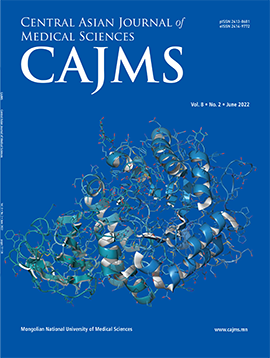Morphometric Evaluation of Bony Nasolacrimal Canal in Mongolians with Primary Acquired Nasolacrimal Duct Obstruction
DOI:
https://doi.org/10.24079/cajms.2022.03.005Keywords:
Bony Nasolacrimal Canal, Primary Acquired Nasolacrimal Duct Obstruction, Computed TomographyAbstract
Objectives: To compare the morphometric differences of the bony nasolacrimal canal in unilateral primary acquired nasolacrimal duct obstruction (PANDO) patients between PANDO and non-PANDO sides and the control group in the Mongolian population. Methods: A hospital-based, retrospective case-control design was used for this study. A total of 584 participants were grouped into PANDO patients and the control group. Morphometry of the bony nasolacrimal canal was measured by CT scan. Results: The bony nasolacrimal canal’s minimum transverse diameter was 3.67 ± 1.96 mm on the PANDO side, 3.98 ± 2.01 mm on the non - PANDO side and 4.03 ± 1.12 mm for the control group (p > 0.05). The distal bony nasolacrimal canal transverse diameter was 4.39 ± 1.21 mm for the PANDO side, 4.33 ± 1.32 mm on the non-PANDO side and 5.11 ± 1.25 mm for the control groups (p < 0.05). The bony nasolacrimal canal entrance transverse diameter was 4.36 ± 1.59 mm on the PANDO side, 4.43 ± 1.83 mm on the non-PANDO side and 4.69 ± 1.61 mm in the control group (p < 0.05). Conclusion: Narrower bony nasolacrimal canal morphology may cause a tendency for PANDO development. We identified a narrow distal bony nasolacrimal transverse diameter for both the PANDO and non-PANDO sides of unilateral PANDO patients compared with the control group.
Downloads
222
Downloads
Published
How to Cite
Issue
Section
License
Copyright (c) 2022 Mongolian National University of Medical Sciences

This work is licensed under a Creative Commons Attribution-NonCommercial 4.0 International License.




